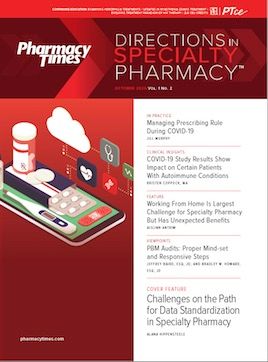Publication
Article
Specialty Pharmacy Times
New Treatment Options for Chronic Inflammatory Demyelinating Polyneuropathy
Chronic inflammatory demyelinating polyneuropathy (CIDP) is similar to many neuromuscular diseases but has unique features in the 30,000 affected Americans.
Chronic inflammatory demyelinating polyneuropathy (CIDP) is similar to many neuromuscular diseases but has unique features in the 30,000 affected Americans. Jerry Siegel, PharmD, FASHP, provided an expert overview in a web-based educational event. Comparing CIDP with multiple sclerosis, he indicated that patients with CIDP are less likely to have stiffness and more likely to have 2 or more limbs on both sides of the body affected. Limb weakness, sensory symptoms such as tingling and numbness, and motor symptoms are common to both conditions, making CIDP difficult to diagnose. CIDP presents at any age but increases with age and is more frequent in men than women.
Siegel said most patients experience a progressive course, but roughly one-third have a relapsing/remitting or monophasic pattern. Improving symptoms, restoring functionality, and achieving long-term remission are the goals of treatment. Evidence-based treatment with corticosteroids, immunoglobulins, or plasmapheresis leads to a fair prognosis. Patients may need treatment indefinitely. Before starting any treatment, patients need to have detailed risk-benefit discussions with knowledgeable health care providers.
When immunoglobulins (IGs) are used, results of research suggest that 75% of patients will improve. About one-third of patients experience remission or cure, and an additional 44% will have stable active disease. Yet, common adverse effects (AEs) range from headache, fever, and chills to the rarer aseptic meningitis, thromboembolic complications, or renal failure.
One key point was that IGs differ in their composition and approved indications, and they often are not interchangeable. IG can be administered intravenously (IV) every 3 to 4 weeks or subcutaneously (SC) once weekly. IVIGs have boxed warnings for thrombosis and renal dysfunction in predisposed patients, while SCIG has a boxed warning for thrombosis.
Siegel said the goals of treatment for CIDP include improved functionality by reversing weakness and sensory loss, maintaining remission, and avoidance of overtreatment. Initial therapy options include glucocorticoids, plasmapheresis, or IVIG therapy. SCIG is a maintenance therapy option after patients are stabilized on IVIG. SCIG may be a useful option in patients who have poor venous access, experience systemic AEs with IVIG, or experience a “wearing-off” effect. All patients with CIDP need comprehensive support from their health care team, and Dr Siegel noted that specialty pharmacists have a role in product selection, coordination of care, and patient education.
Siegel concluded by reiterating that treatment with IG should be personalized for patients with CIDP. Specialty pharmacists can have many opportunities to participate as key decision makers in the care of patients with CIDP.







